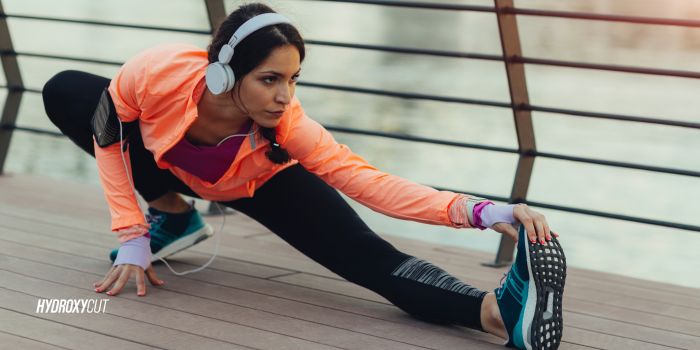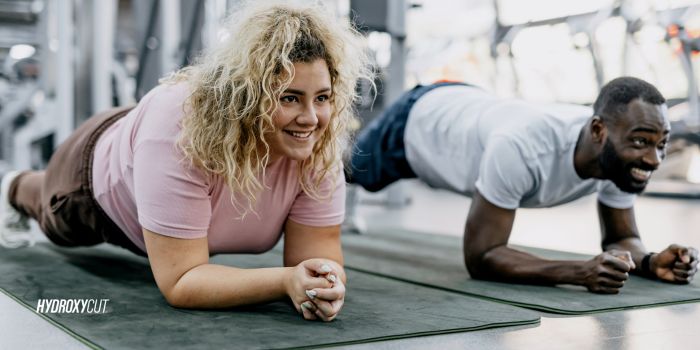As someone who goes for a morning run, or is thinking of starting running, a thought must have passed your mind: “Does running make my legs bigger?” Well, you aren’t the only one. It’s one of the most common questions runners ask and one that sparks endless debates across gyms, and online. Some swear their legs have become leaner and stronger from running, while others claim their jeans fit tighter after months on the trail. So, what’s the truth?
The short answer to this is running can make your legs look different, but not always bigger. How your legs respond depends on how you run, how much you run, and how you recover. Different running styles signal your muscles in completely different ways. Long, steady miles teach your legs to endure, while short, intense sprints challenge the muscles, sometimes creating a subtle increase in size. Take into consideration your nutritionand daily recovery habits, and suddenly the story behind your thighs and calves becomes a lot more interesting than a simple yes or no.
A 2022 review in Frontiers in Physiology found that endurance running increases muscle efficiency and mitochondrial density without significantly enlarging muscle fibers, whereas sprint training under heavy load can cause measurable but moderate muscle growth over time (Frontiers, 2022).
In other words, it’s not just running that shapes your legs, it’s the kind of running you do.
In this blog, you’ll get to know:
The science behind how running actually changes your leg muscles
The difference between “strong” and “bulky” legs
Why do men and women experience these effects differently
How your diet and recovery habits make or break your results
Check out the new Hydroxycut HUNGER CONTROL
Table of contents
Does Running Make Your Legs Bigger?
Let’s get right to it. Running can make your legs look stronger, but not necessarily bigger.
If you develop firmer thighs and calves, or notice little change at all, it depends on how you train, how you fuel, and how your body adapts. If you’re a long-distance runner, your legs become more endurance-efficient, leaner, tighter, and built for long performance. If you’re a sprinter, hill runner, or HIIT enthusiast, your legs work under higher resistance and speed, triggering short-term muscle fiber expansion that can create a slightly fuller look.
Look at it this way:
Long runs sculpt your legs, training slow-twitch fibers for stamina.
Sprints and hills strengthen your legs, activating fast-twitch fibers that briefly grow in size.
But, even when muscle fibers enlarge, the change is often small and performance-driven, not bulky or dramatic. A 2021 study published in the European Journal of Applied Physiology found that trained runners increased thigh muscle cross-sectional area by an average of only 4% after 12 weeks of high-intensity sprint training, mostly due to improved strength and power, not size. Meanwhile, endurance runners in the same study maintained similar leg measurements while improving aerobic capacity and definition.
The science is clear: running refines muscle quality more than it inflates muscle size. So, if your goal is toned, defined, and athletic legs, not necessarily larger ones, running is still one of the easiest ways to achieve it. Running builds performance, not bulk, and that’s exactly why your legs start to look more athletic.
The Science of “Does Running Make Your Legs Bigger?”
You’ve probably noticed that after a good run, you experience a post-run tightness, a mild pump, or the satisfying fatigue that makes your legs feel alive. That’s not soreness, it’s your body adapting. Every stride you take creates micro-signals that tell your muscles, blood vessels, and even your cells to prepare for next time.
1. The Role of Muscle Fiber: Endurance vs. Power
Your legs are home to two main types of muscle fibers:
Slow-twitch fibers (Type I): built for endurance. They’re smaller, packed with mitochondria (your cells’ power plants), and help you run longer with less fatigue.
Fast-twitch fibers (Type II): built for speed and strength. They’re thicker and can grow slightly in diameter when trained under high intensity, like sprints or hill climbs.
When you go for long, steady runs, your slow-twitch fibers do most of the work, improving efficiency, circulation, and energy metabolism without expanding in size. In contrast, sprinting or resistance-style running shortly activates fast-twitch fibers, which can temporarily appear fuller, but the visual change is subtle and fades with regular endurance training.
2. Metabolic Remodeling: More Efficiency, Not More Volume
Running impacts your leg muscles at a cellular level. With each workout, your body increases capillary density, meaning more blood vessels form to deliver oxygen and nutrients faster. It also increases enzymes that help your muscles break down stored fuel (glycogen).
A 2020 review in Exercise and Sport Sciences Reviews found that trained runners showed higher oxidative enzyme activity and improved metabolic flexibility without notable increases in muscle size (ESSR, 2020). That’s why runners often describe their legs as “strong but light”. They’ve adapted for output, not mass.
3. Neural Adaptations
One of the most underrated changes running creates is neuromuscular productivity; your brain and muscles communicate faster. Every time you run, your nervous system learns how to use muscle fibers more perfectly, so you use more of what you already have, not add more tissue. A 2021 study in The Journal of Strength and Conditioning Research noted that neuromuscular coordination improved up to 30% after consistent running programs, even without measurable muscle gain. This is why experienced runners often feel their legs “fire”.
4. Temporary Swelling: The Post-Run “Pump”
If your legs look slightly fuller right after a run, that’s not muscle gain; it’s fluid movement.
During high-intensity activity, blood rushes to active muscles, causing short-term swelling.
As your body cools down and fluid redistributes, that temporary look fades within hours.
A 2022 European Journal of Applied Physiology paper found that transient muscle volume can increase by 2–3% after strenuous exercise, returning to baseline within 24–48 hours. So, if your legs feel “bigger” after a long run, they’re just hydrated, active, and fully engaged.
The Style of Running Matters
A casual jog, a 10K marathon prep, and a set of sprints may all look similar on paper, but what they do to your legs couldn’t be more different. The truth behind “Does running make your legs bigger?” depends largely on how you run and what kind of stress your muscles are exposed to.
1. Long-Distance or Steady-State Running
If your runs are slow, steady, and measured in miles rather than minutes, your legs are training for endurance, not expansion. Long-distance running activates primarily slow-twitch muscle fibers, improving productivity, oxygen delivery, and fatigue resistance. These fibers don’t thicken easily; instead, they become more conditioned, leading to leaner, tighter legs.
A 2020 study in Medicine & Science in Sports & Exercise found that endurance-trained athletes had up to 25% more capillary density in their thighs compared to non-athletes, with no increase in muscle diameter.
Also Read: How to Lose Weight in 8 Weeks?
2. Sprinting and HIIT
Sprints or interval running uses fast-twitch muscle fibers, the ones responsible for explosive speed and strength. These fibers have a greater capacity to grow in diameter when exposed to high-intensity loads, when combined with good recovery and adequate protein. That’s why sprinters have visibly muscular legs compared to long-distance runners.
But remember, these differences appear through high-resistance, high-velocity training, not casual jogging. If you sprint or perform HIIT workouts regularly, your legs will appear slightly fuller, not bulky, but stronger and denser.
3. Hill or Incline Running
Running uphill or on an incline is the closest thing to resistance training without weights.
Every step fights gravity, forcing your quads, hamstrings, and calves to work harder, much like a squat in motion. This improves strength and running economy and can also modestly improve muscle definition. Incline running sculpts your lower body by building endurance and resistance, and does not inflate it.
Also Read: How to Lose Weight Fast?
4. Treadmill Running
Treadmills reduce impact and resistance, which makes them good for consistency but less likely to change muscle size. They’re excellent for beginners or recovery runs, as they maintain cardiovascular health without overloading the joints. If you’re using a treadmill regularly, vary the incline and pace for balance; this can be a great workout for your legs.
Men vs Women: How Biology Changes the Outcome
Even when men and women follow the same running plan, the effects can look very different. That’s not luck, it’s biology. Your hormones, muscle fiber composition, and recovery signals all influence how your legs respond to running.
1. Testosterone vs Estrogen
At the simplest level, testosterone promotes muscle growth, while estrogen supports endurance, energy use, and muscle recovery.
That’s why:
Men tend to develop more visible muscle definition and slightly thicker thighs or calves from high-intensity running.
Women, in general, experience improved tone, shape, and endurance without the same degree of growth.
A 2021 review in Frontiers in Sports and Active Living found that men had 30–40% greater increases in muscle protein synthesis following sprint or resistance training compared to women, primarily due to testosterone levels. Running builds strength in both, but men show more visible muscularity, while women gain efficiency and tone.
2. Muscle Fiber Ratios
Men carry a higher proportion of fast-twitch muscle fibers, which respond more strongly to explosive training (like sprints or hill runs). Women have more slow-twitch fibers, which help in endurance and fatigue resistance.
A 2020 study in The Journal of Applied Physiology reported that women’s slow-twitch fibers are more oxidative and fatigue-resistant, allowing them to sustain performance longer, without significant hypertrophy.
3. Age and Hormone Shifts
Your body’s response to running evolves with age.
In your 20s–30s: Your hormones are balanced for adaptation; men may gain visible tone faster, and women increase endurance quickly through running.
In your 40s–50s: Testosterone and estrogen levels slowly decline, which can reduce muscle responsiveness and recovery speed.
After 50: Both men and women benefit more from consistency and strength-based running to maintain tone and joint health.
Age doesn’t stop progress; it just shifts your focus from building to maintaining. The key is adapting pace, recovery, and strength support.
4. Energy Use and Recovery Differences
Women oxidize fat for energy more during endurance exercise, while men rely more on stored glycogen. That means women’s legs experience less post-run inflammation and fluid retention, one reason they rarely “bulk up” even with intense running routines. Women recover faster and maintain leaner muscle lines; men adapt with slightly more muscle activation and visible mass.
How to Get “The Runner’s Look?”
If you’ve ever looked at seasoned runners, like marathoners or sprinters, you’ll notice something striking. Their legs rarely look bulky. They look defined, athletic, and ready to move. That’s the runner’s look: a balance between form and function.
1. Definition Comes From Repetition
Running creates a natural “shaping effect.” Each stride repeats thousands of micro-contractions that engage your thighs, hamstrings, calves, and glutes. Over time, this repetitive activation tightens muscle fibers, improves blood flow, and improves the texture of your legs.
A 2020 Sports Biomechanics review found that runners developed higher muscle density and lower intramuscular fat infiltration compared to sedentary participants, meaning stronger, firmer muscle tissue, not larger volume. In plain words, running reorganizes your muscle tissue for strength and definition.
2. The Illusion of “Smaller” or “Bigger” Legs
Sometimes, after weeks of consistent running, your jeans may fit differently, tighter in one spot, looser in another. That’s not bulk or loss, it’s redistribution. As your leg muscles grow stronger and denser, they push against the skin differently, while the surrounding subcutaneous fat may slowly thin out. This can make your legs appear more sculpted or slightly fuller in certain areas, depending on your starting point. Visual change doesn’t mean that you have bulked. It’s the result of muscle refinement and improved body composition.
3. Endurance Muscles
Running trains your muscles to be resilient. Endurance-trained muscle tissue is smaller in size but higher in mitochondrial density, which means it’s better at producing energy for long durations. That’s why runners can maintain lean muscle while performing explosive movements without increasing the size of their legs. Stronger doesn’t always mean bigger; it means better equipped for performance.
4. Confidence Is the Real Outcome
Perhaps the most underrated change from running is mental. That growing sense of confidence when your stride feels easier, your pace steadier, and your reflection more capable, that’s your body adapting. The “runner’s look” isn’t defined by measurement tape; it’s defined by movement, endurance, and self-assurance.
Nutrition, Recovery & Consistency While Running
You can run miles every day, but if your body isn’t fueled, rested, or recovering properly, your results will always feel halfway there. That’s because what happens outside your runs, at the dinner table, in bed, and between workouts affects how your legs adapt to all that effort.
1. Nutrition: What You Eat Shapes What You See
Your muscles need fuel, not deprivation. Running demands energy, and that energy comes from food. A well-fed body doesn’t “bulk up,” but adapts much better.
Protein helps your muscles recover from repetitive impact and maintain tone. A 2020 meta-analysis in The American Journal of Clinical Nutrition found that consuming 1.6–2.0 grams of protein per kilogram of body weight per day improved muscle maintenance and recovery in endurance athletes.
Carbohydrates fuel your runs. Without them, your body breaks down muscle tissue for energy. Eat complex carbs like oatmeal, quinoa, fruits, and sweet potatoes to sustain energy without excess spikes.
Fats regulate estrogen and testosterone, keeping recovery and metabolism balanced. Include avocados, olive oil, nuts, and seeds regularly.
Even a 2% fluid loss can reduce muscle performance and increase soreness, according to a 2021 study in the Nutrients Journal. Drink water throughout the day, and hydrate before and after every run.
2. Recovery
Running breaks muscle fibers down, and recovery builds them back stronger. If you’re training hard but skipping rest, your legs may feel heavier or swollen, not firmer.
During deep sleep, your body releases growth hormone, which repairs tissue and restores balance.
Take at least one or two rest or active recovery days per week. Light walking, yoga, or stretching keeps blood flowing and prevents tightness without overloading your muscles.
Chronic stress raises cortisol, a hormone that can interfere with muscle repair and fluid balance. Simple practices like meditation, deep breathing, or unplugging post-run can help normalize recovery hormones.
3. Consistency
Your legs won’t change overnight; they evolve through repetition and balance. Even 25–30 minutes of consistent, moderate-intensity running done 4–5 days a week is better than occasional extreme running. All you need is persistence. The body you’re building with each run improves with steady effort, smart nutrition, and rest.
The Hydroxycut Take: Staying Consistent and Ignoring Myths
Ask any runner, the hardest part isn’t the first mile, it’s showing up for the next one. That’s how consistency affects running, and a supplement like Hydroxycut can make consistency easier for you. It's not a quick fix, but a training essential that helps you stay energized, alert, and focused when your motivation dips.
High-intensity or long-distance running uses your body’s natural energy reserves. Hydroxycut’s formulas are created to support increased energy with added caffeine.
A clinical trial published on Hydroxycut showed that participants who took c. canephora robusta over 60 days, alongside a balanced plan, showed greater body composition improvements than those on a placebo. Hydroxycut works best when it supports your consistency, helping you stay on track through the mental and physical demands of training.
Running Goal |
Challenge |
Hydroxycut Support |
Early morning runs |
Low motivation, low energy |
Hydroxycut Original: caffeine-based, enhances focus and increases energy. |
Sprint or interval training |
Fatigue and lack of drive mid-session |
Hydroxycut Hardcore Elite: for users who want increased energy |
Daily convenience and energy support |
Energy on the go. |
Hydroxycut Drink Mix: quick, portable, and increased energy option |
Like every supplement, Hydroxycut should be used mindfully. It works best alongside a structured nutrition and training plan.
Follow serving directions exactly as labeled.
Avoid taking doses late in the day to protect sleep quality.
Stay hydrated during the day.
If you’re on medication or have health conditions, consult a physician before use.
Explore the full product range and ingredient transparency at www.hydroxycut.com.
End Note: Running Does Not Make Your Legs Bigger
After all the talk, studies, and myths, the truth is simple: Running doesn’t just change your legs, it changes what your legs can do. It doesn’t automatically make them bigger or smaller. It makes them smarter, stronger, and perform better. What we often mistake as “bulk” is really adaptation, your body doing exactly what it was designed to do. And, that’s not something to fear; that’s something to celebrate. Every step reprograms your system to go further, last longer, and feel stronger.



